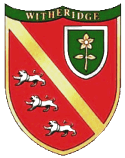

|
By diverting the country's resources into the war effort, it became inevitable that the availability of consumer goods of all kinds would become scarce, and that shortages would occur. In order to ensure fair distribution of these basic essentials, the Government introduced food rationing, and, by November 1939, Ration books had been issued to everyone. There were a number of different types of ration books, but the most common was the plain buff-coloured one, issued to all adults and, and children of school age. Expectant mothers had a Green Ration book permitting them some extra rations, not always a welcomed gift if the pregnancy was outside of wedlock. The tokens themselves had no "monetary value", they were simply a means of ensuring that everybody received a fair share of the available food. Although initially for food, as the war progressed, clothing also became subject to rationing. Meat, butter and sugar were rationed from early 1940, other foodstuffs, including tea, were added later, and entitlement varied at different times during the war. Bread, potatoes, coffee, vegetables, fruit and fish, were never actually rationed, although choice and availability, of the last three were often limited. It was on 8 January 1940 (four months after the war started), that food rationing came into force, and the rations, per person, per week:
Sugar: 12 ounces Raw bacon or Ham: 4 ounces Eggs x two Cooked bacon or Ham: 3.5 ounces Meat rationing started 11 March 1940. In general, the public supported rationing as ensuring fair shares for all, and although a black market did develop, it never seriously threatened the system. It was generally accepted that food rationing improved the nation's health, through the imposition of a balanced diet with essential vitamins, infant mortality rates declined, and the average age at which people died from natural causes increased. Meat, butter and sugar were rationed from March 1940, other foodstuffs, including tea, were added later, and entitlement varied at different times during the war. Bread, potatoes, coffee, vegetables, fruit and fish, were never actually rationed, although choice and availability, of the last three were often limited In July 1940, a complete ban was put on the making or selling of iced cakes, and in September the manufacture of 'candied peel' or 'crystallised cherries' meant the death knell for the traditional wedding cake. On 1st December 1941, the Ministry of Food introduced the points rationing scheme for items such as canned meat, fish and vegetables at first. Later they added items such as rice, canned fruit, condensed milk, breakfast cereals, biscuits and cornflakes. Everyone received 16 points a month, later raised to twenty, to spend as wished at any shop that had the items wanted. With a picture of a tablet of soap dissolving away down the sink if left in water, a 12oz.(340 gm) packet of soap powder was half a month's ration; you could get one egg every two months, and powdered egg could be bought on points. Fruit like bananas vanished altogether. One consequence of the introduction of Petrol Rationing was that people ceased buying what cars were available. With the end of the war, things did not improve much, and, in 1948, three years after the war, many items still remained rationed, such as: Bacon and Ham: 2 oz. per person a fortnightCheese: ½ oz. a week Butter/margarine: 7 oz. a week Cooking fats: 2 oz. a week Meat: 1s. worth a week Sugar: 8 oz. a week Tea: 2oz. a week Chocolates and sweets: 4oz.a week Eggs: No fixed ration: 1 egg for each ration book when available Milk: 3 pints a week Preserves: 4oz. a week Bread, soap, bananas, and potatoes were also rationed during this period. In 1951 people could still buy only 10d.(4p) worth of meat each week. Two new commodities were rationed after the war. Bread was rationed from 1946 to 1948 and potatoes for a year from 1947. The points system ended in 1950. Rationing continued in this country for 14 years until 1954, when meat was finally de-rationed. In 1942 a man with only the basic clothes ration could buy one pair of socks every four months, one pair of shoes every eight months, one shirt every twenty months, one vest and one pair of pants every two years, one waistcoat every five years, and an overcoat every seven years. Three ration coupons would be set aside for the purchase of small items such as handkerchiefs. C.G recalls rationing of a kind, although it, not surprisingly, made little impact on her family. One day the Police Sergeant informed her father that he and his family must not eat cream. When her father expressed surprise, the sergeant said, "That's the law." "Well" father said "is it? I don't care what the law is, I produce it and if I'm eating cream, I'm not eating anything else." He did not care tuppence. Labour was very scarce and by the end of the war at Cannington, they were left with a "young fourteen year old who wasn't very big. When there was any hay wanted in I know I had to go up and help him." He is recalled as being the brother of Mrs Bristow. Rationing: "Food got scarce and we used to barter a lot." "In Essex, Leonard used to carry about a piece of something or other broken in his car in case he was stopped." (Petrol rationing) "In Essex, the Policeman used to come for eggs and put them up in his hat" "I went up Essex and the bombs started falling so I came home, it was safer here than anywhere else." Previous Last Edited 03/07/2006 Copyright © 2000-2006 Witheridge Unless otherwise indicated on the page in question, the photographic images reproduced on this site belong to the Witheridge Archives, and, as such may not be reproduced for commercial purposes without written permission. However, you are welcome to use any of the photographs belonging to the archive for personal and/or non-commercial use. Any material shown as not being owned by the archive may not be reproduced in any form without first receiving written permission from the owner of the material in question. |


